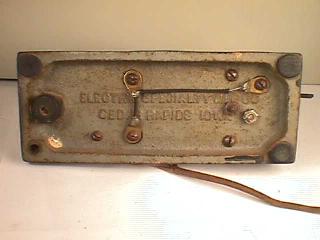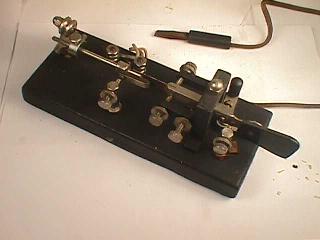Electric Specialty Manufacturing Co.




There are two types of cast bases. The older type of cast iron base had four large (approx. 3/4") rubber feet. The later model has a platform near the "front" of the key for mounting a fifth, large foot. It had four suction-cup type feet of about 1/2" diameter on the usual four corners. The early base used a straight, 3" circuit closer lever on the right side. Later bugs used a right-angle circuit closer located under the paddle. According to Doug Seneker, N0WAN who seems to be very knowdlegable on CR Keys (See The Vail Correspondent No. 21 October 1997 for his article and Al Culbert, K0AL another expert on CR's) there is no verification of any correlation between the early and later bases with this change in circuit closer. He has seen the later circuit closer on early bases. Early frames were cast brass, painted wrinkle black. Early models also seem to usually have a cast brass damper, also painted. Most later keys have a stamped metal damper, nickel plated.
Al Culbert , K0AL has encountered six primary variations. They are: Two styles of cast base, one with extra bosses on the underside and one without. Two styles of damper support, one being cast, and the other being a plated sheet metal stamping.
Two styles of underside wiring, one using hook-up wire and sleeve insulation, the other using stamped brass stock.
The damper inself consists of a rubber "O" ring rolled on a piece of round stock having a groove to retain the "O" ring and being of the same internal and external diameters as the adjustable pendulum weights.
The various knobs and springs most likely came from a commercial supplier of such hardware and do not appear to be unique or proprietary in nature. The fixed and spring contacts must have been specially made and appear to be a cupro-nickel electrical contact grade material. The dash pivot is a stamping to which a fixed contact is attached and hinged to the main lever.
As mentioned in this article, I take no credit as a historian on the CR speed keys. I only gathered data from various sources including Al Culbert, KOAL and Doug Seneker N0WAN excellent articles in TVC No.21 October 1997. See those complete stories for future information on Electric Specialty Manufacturing Co.